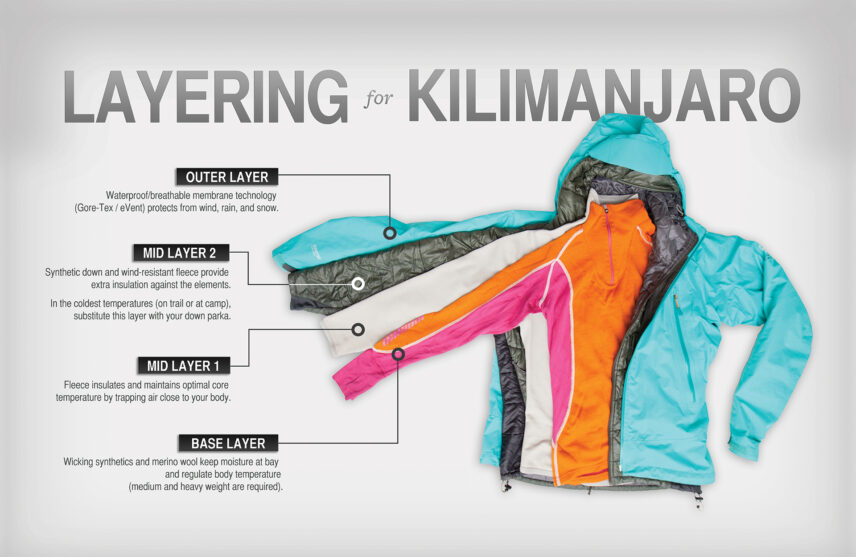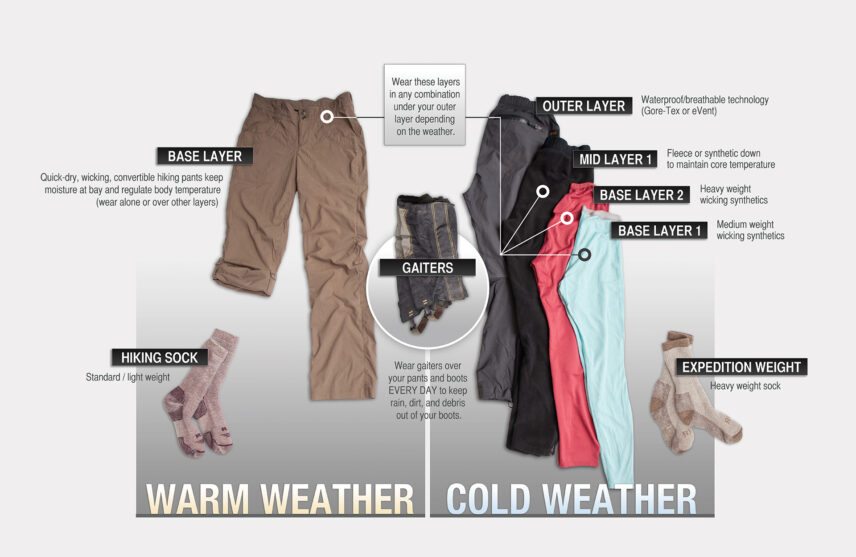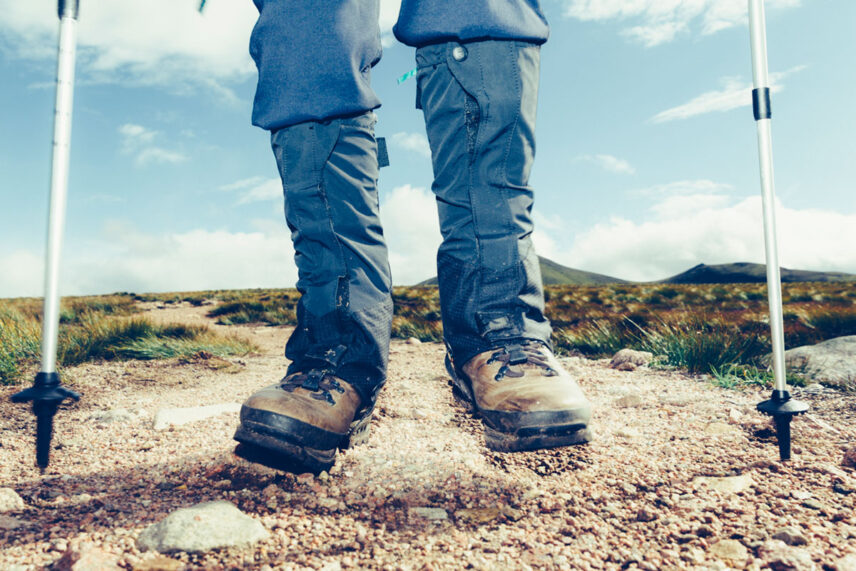How do you dress to hike through Kilimanjaro’s five climate zones? From the humid, equatorial heat of the rainforest (high of 70-90 degrees) to the peak’s icy drifts (low of -10 degrees), this mountain will require quite a few wardrobe changes.
You won’t just change outfits from zone to zone either. Kilimanjaro creates its own weather, and conditions often change within a matter of hours. You’ll shed layers under the intense midday sun and bundle up when the temperature plummets past sunset. In between, you may experience everything from biting wind to rain and mist to pleasant, mild atmosphere.
Preparing for it all takes some thought. After all, you can only pack so much due to the 33-pound luggage weight limit. Luckily, we’ve done much of the thinking for you! Below we’ll explain the qualities behind each layer of your clothing, so you’ll know what types of materials to look for. Then we’ll provide some specific recommendations.
Layering is Key

Think in layers when you’re preparing for Kilimanjaro – base, mid and outer. Layers provide versatility to shield you from the cold, keep you cool and comfortable scrambling over switchbacks, and protect you from rain and snow. Here are the properties and materials each layer should have.
1. BASE LAYER
The layer closest to your skin, these items will help you maintain body temperature and manage moisture by wicking away perspiration and drying quickly. Avoid cotton and look for merino wool or synthetic material.
Your base layers will include different fabrics and types of clothing from warm to cold weather.
Warm Weather Base Layer
In the rainforest, a light weight synthetic short sleeve and quick dry hiking pants or shorts will often be enough.
Cold Weather Base Layer(s)
When you gain altitude and the temperature drops, you’ll want two types of base layers – a medium weight option and a heavy weight option. You can choose the medium or heavy or combine the two based on how cold it is.
Why Merino Wool?
Merino wool is much finer than regular wool, which makes it soft and comfortable in direct contact with your skin. It’s also remarkably warm in relation to its weight and excellent at
2. MID LAYER
On top of your base, we recommend fleece mid layers. Like your cold weather base, you should have interchangeable light and heavy weight options.
Light Weight Mid Layer
A long sleeve fleece is a good light weight mid layer – just enough for crisp heath and moorland temperatures.
Heavy Weight Mid Layer
Bring a wind-resistant fleece or synthetic down jacket to wear over your light weight mid layer. Match this with wind resistant fleece or synthetic climbing pants.
3. OUTER LAYER
Your outer layer includes your down puffy jacket and rain layers – everything you’ll need to stay warm at Kili’s coldest temperatures and dry in the worst weather.
Your Down Jacket
This heavy jacket will insulate you from the cold and should be 550 fill or higher. It can be used instead of your heavy weight mid layer or you can add it on top if it’s extra cold.
Your Rain Layer
Rain layers, or shells, protect you from wind, rain and snow. They should be waterproof and breathable. They go on top of your fleece or down puffy jacket and climbing pants during bad weather.
We cannot exaggerate their importance. Weather on Kilimanjaro is largely unpredictable. You should prepare to hike through heavy rain and work up a sweat at the same time. GORE-TEX® and eVent fabrics keep you from getting soaked or overheated so you don’t slow down in the elements.

We recommend GORE-TEX® and eVent rain layers.
There’s a lot of science behind waterproof and breathable fabric design. Making a jacket that resists rain just as well as it releases perspiration and water vapor is complicated work, which is one reason these materials tend to be expensive.
Other Clothing

Shirts, pants and jackets aren’t all you’ll need to climb Kili. We also recommend bringing:
- Hiking boots
- Heavy weight gloves or mittens
- Waterproof and breathable shell mittens
- A fleece or wool hat that covers your ears
- A balaclava
- Gaiters
- Hiking and trekking socks
- Polarized sunglasses
- A rain poncho
- Sneakers for wearing in camp
